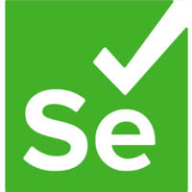

OpenText Silk Test and Selenium HQ are two prominent testing frameworks competing in software quality assurance. Selenium HQ seems to have the upper hand due to its open-source nature, community support, and flexibility, making it ideal for adaptable testing environments.
Features: OpenText Silk Test offers comprehensive test management, cross-browser testing, and advanced protocol support. Selenium HQ is praised for supporting multiple programming languages, cross-browser testing, and easy integration with development environments.
Room for Improvement: OpenText Silk Test could enhance its learning curve and reduce setup complexity. Selenium HQ may improve reporting capabilities, simplify debugging processes, and enhance support for mobile testing to keep pace with evolving testing needs.
Ease of Deployment and Customer Service: OpenText Silk Test provides enterprise-level support and structured deployment, ensuring smooth onboarding. Selenium HQ, with its self-managed deployment model and vibrant community, offers abundant resources for customization and flexibility.
Pricing and ROI: OpenText Silk Test involves higher upfront costs but promises substantial ROI with its enterprise features. Selenium HQ, being open-source, removes initial costs, allowing budget allocation towards additional functionalities, often delivering quicker returns for cost-efficient projects.


Selenium HQ is an umbrella project that includes a number of tools and frameworks that allow for web browser automation. In particular, Selenium offers a framework for the W3C WebDriver specification, a platform- and language-neutral coding interface that works with all of the main web browsers.
Selenium is a toolset for automating web browsers that uses the best methods available to remotely control browser instances and simulate a user's interaction with the browser. It enables users to mimic typical end-user actions, such as typing text into forms, choosing options from drop-down menus, checking boxes, and clicking links in documents. Additionally, it offers a wide range of other controls, including mouse movement, arbitrary JavaScript execution, and much more.
Although Selenium HQ is generally used for front-end website testing, it is also a browser user agent library. The interfaces are universal in their use, which enables composition with other libraries to serve your purpose.
The source code for Selenium is accessible under the Apache 2.0 license. The project is made possible by volunteers who have kindly committed hundreds of hours to the development and maintenance of the code.
Selenium HQ Tools
These three main Selenium HQ tools have powerful capabilities:
Reviews from Real Users
Selenium HQ stands out among its competitors for a number of reasons. Two major ones are its driver interface and its speed. PeerSpot users take note of the advantages of these features in their reviews:
Avijit B., an automation tester at a tech services company, writes of the solution, “The driver interface is really useful. When we implement the Selenium driver interface, we can easily navigate through all of the pages and sections of an app, including performing things like clicking, putting through SendKeys, scrolling down, tagging, and all the other actions we need to test for in an application.”
Another PeerSpot reviewer, a software engineer at a financial services firm, notes, “Selenium is the fastest tool compared to other competitors. It can run on any language, like Java, Python, C++, and .NET. So we can test any application on Selenium, whether it's mobile or desktop."
We monitor all Functional Testing Tools reviews to prevent fraudulent reviews and keep review quality high. We do not post reviews by company employees or direct competitors. We validate each review for authenticity via cross-reference with LinkedIn, and personal follow-up with the reviewer when necessary.